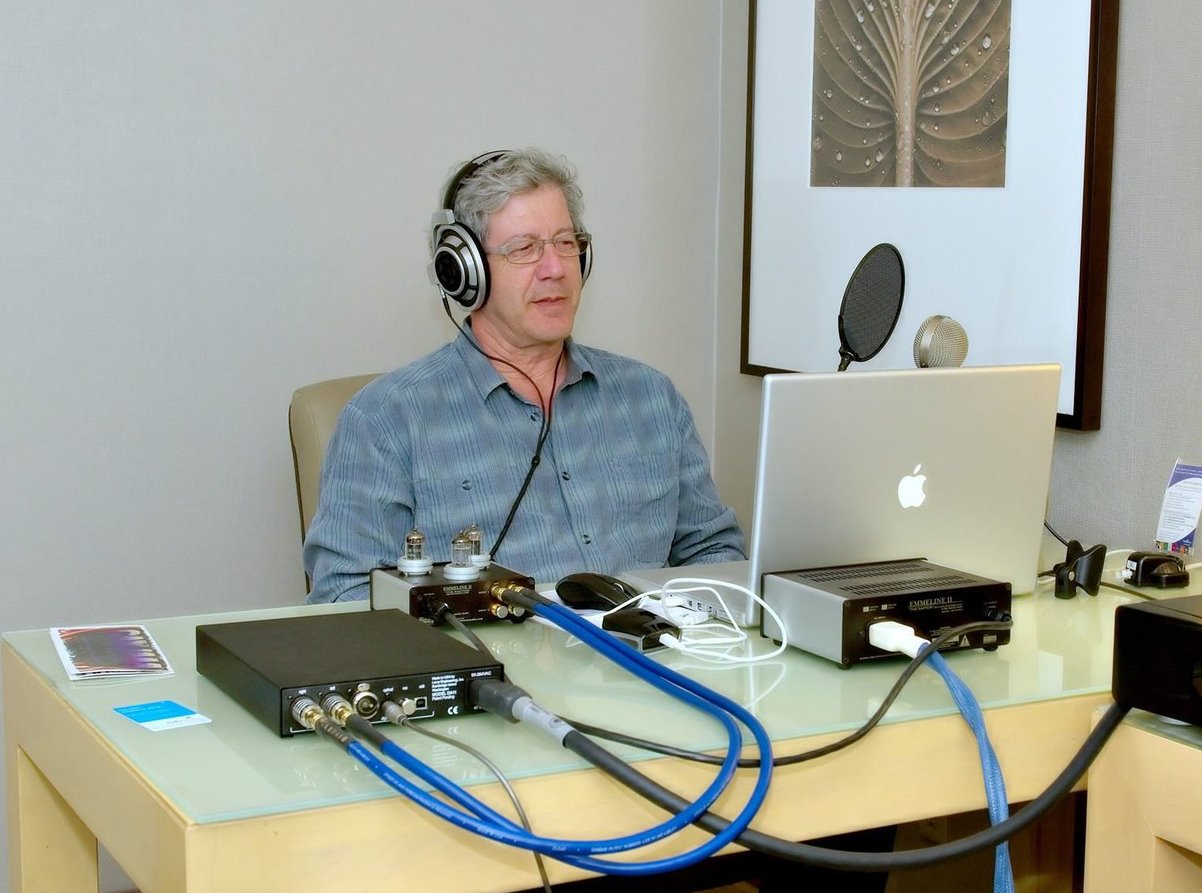
Please note that this is a post from a humorous cycle that draws the attention of readers to somewhat illogical technical solutions in audiophile electronics. If you are counting on a detailed technical exposure of the absurd methods of the audio religion, then they are not here.
Conduct a sacred warm-up
If the neophytes of the audio religion recommend warming all headphones, then experienced adepts insist that heating will not be effective on reinforcement ones. Warm-up means long-term work at a volume close to maximum. Warming is advised either with pink noise or good music. It is believed that in the process of working with a relatively large amplitude, the mechanical units of the sound emitter change their properties, for example, the membrane becomes softer and more elastic.
In reality, this does not happen. No changes at the level of passport parameters, no peculiarities in the specifications and, most importantly, not a single word in at least a special or scientific literature. I have only met a specialist mentioning the real effectiveness of long-term continuous work with a complex musical signal or pink noise only once. There it was about low-frequency mugs with a cellulose cone, but these were healthy kinapovy speakers for cinema, not headphones.
Engineers from companies such as SHURE, Sennheiser and Beyerdynamic have repeatedly said that their headphones always sound the same and do not require additional procedures to improve the sound, including warming up. SHURE even ran an experiment comparing measurable parameters ten years after the pair was released. It was expected that there would be significant changes, but nothing beyond the limits of the measurement equipment error was found.
There is a nuance, some niche, little-known audiophile offices even create specifications for warming up. Their headphones use cellulose diffusers, and I admit that they are unstable in parameters so that after 12 hours of operation there may be noticeable changes. However, this does not mean the quality of the product, rather the opposite. We already wrote more about this.here and here .
Use the divine cable
Another common misconception concerns cables, as is the case with interconnects, which many in the audiophile community recommend choosing for a price, according to super headphone experts, very expensive speaker cables are needed. It is desirable that the cable cost at least 10% of the cost of the headphones. But if you use not very good headphones, then you probably need a super expensive cable that will be able to compensate for all the worthlessness of the headphones with electrons, cutting off the correct trajectory in the ski wax guide.
Here, stories are used about the degree of purification of oxygen-free copper and the incomparable purity of sound from a silver conductor. They can tell about the unique isolation, which reduces the microphone effect, which badly spoils the sound. If the advisor is not just an adherent of breadboarding, but a person who is financially interested, like a sommelier in a restaurant, then the neophyte will certainly be persuaded to buy the most expensive cable. There can be no limits to the absurdity of justifying cable replacement, and it is possible that in a few years sarcasms about isolation, woven from the hair of a red-haired virgin, cut off on a full moon, will become a terrifying reality.
Apply the infallible connector
I must say right away that this is not the most stupid advice if the connector does not fulfill its function. Let's say it was mechanically damaged, getting into the space between the door and the jamb or under the wheels of an office chair, which is why it began to perform poorly, for example, periodically turn off one of the headphones while driving. But usually we are talking about the fact that the connectors in some miraculous way improve the contact. Strictly speaking, this is not entirely true, because an openly shitty Chinese connector can worsen it.
However, in general, even in the economy segment, such crap is not used. Most of even the cheapest headphones have very strong connectors that provide contact no worse than mega-audio files. It should be noted that the cult of connectors is a special case of lace-up and the theses used by the supporters of the cult are generally similar to those used by the supporters of platinum cables. The main message is that the connector must be expensive. That's right, they won't sell a bad connector for $ 500.
Expensive connectors are often plated with rhodium, the fact is that due to their high resistance to electrical erosion, rhodium and some of its alloys are used as a material for contacts. However, this approach, firstly, is redundant and does not make sense, since electroerosion on the contacts of headphones is a casuistry, and secondly, it is not so expensive, despite the relative rarity and high cost of platinum group metals, which include rhodium. A similar story with gold-plated (and in some cases, literally, gold contacts).
Gold plated connectors, unlike popular myth, are not incredibly expensive. A simple and cheap, from a technological point of view, coating process, the vanishingly small amount of gold that it uses cannot justify the cost even of several tens of dollars, especially hundreds. This is not to mention the fact that the replacement of the connector itself is in 99% of cases a useless procedure. I suppose it is superfluous to mention that replacing a connector will not have a discernible effect on playback.
Disappointing outcome
If your headphones are not satisfactory to you, then they will most likely need to be replaced. No fabulous warm-up, esoteric cable and metaphysical connector will save you. Although, if you found fault with the device, and the claims were caused by suspiciousness, that placebo effect from the above means will really improve the sound. But not in reality, but exclusively in the perception of the believer.
Advertising
In our catalog you can easily find acoustic systems, , , «», «» . , . . .